Bodywork sanding block

Car body sanding block
-
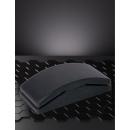 3802.0001Sanding block70 x 125mm - black
3802.0001Sanding block70 x 125mm - black -
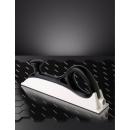 3806.041414-hole sanding block70 x 400mm - velcro
3806.041414-hole sanding block70 x 400mm - velcro -
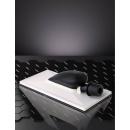 3807.011510-hole sanding blockWith extraction - 115x230mm
3807.011510-hole sanding blockWith extraction - 115x230mm -
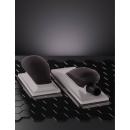 3808.0125Sanding block with dust extraction70 x 125mm - velcro
3808.0125Sanding block with dust extraction70 x 125mm - velcro -
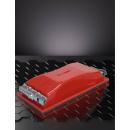 3815.2111Paper sanding blockwith ties 21 x 11 cm
3815.2111Paper sanding blockwith ties 21 x 11 cm
︾
Bodywork sanding blocks: technical presentation and description :
The sanding block is a very important work tool for a bodybuilder. It ensures efficient manual sanding. Its basic shape is simple: a rubber tool with a rounded back and a flat rectangular sole. The sanding paper is held in place by its ends. The sanding block is a support that enables the sanding paper to be used correctly. The sanding block ensures even, high-quality sanding. For fast, practical sanding of car bodywork, Carross has all the sanding equipment you need in its online shop. Discover our sanding blocks and sanding blocks available in a wide range of models: with suction, with fasteners, etc. Thanks to Carross, you'll be able to sand in no time at a low price. Carross offers you these 4CR products for perfect sanding of your bodywork.
There are many shapes of sanding block on the market. The shape and dimensions of the sanding block should be chosen according to the size and shape of the surface to be sanded. Carross also offers sanding blocks suitable for use with mini-discs. For example, our Carross Ø 35mm sanding block adheres perfectly to the MD32 Abrasive disc. What's more, it gives extremely fine sanding. This disc is perfect for getting rid of small dust particles, hairs and other unevenness on the surface of the bodywork. Your car body will be resplendent!
Bodywork sanding blocks are essential tools in the field of car bodywork, used to obtain flat, smooth surfaces during the sanding process. Here are the key technical features of these sanding blocks:
Materials of construction :
Bodywork sanding blocks are generally made from lightweight but robust materials such as plastic, aluminium or composites. These materials allow for comfortable handling while ensuring the tool's durability.
Shape and design :
Sanding blocks are often rectangular with straight edges. Some models may have a curved surface to adapt to specific bodywork contours. The ergonomic shape allows for comfortable and precise use.
Sanding surface :
The sanding surface of the block is generally flat and even, ensuring uniform contact with the surface to be sanded. Some models may have a perforated surface to help evacuate dust and residue.
Sanding paper fixing system :
Sanding blocks are designed to securely fix the sanding paper. This can be done using clamps, hooks and loops (Velcro type), or other fastening systems to ensure a stable grip.
Size and weight:
Sanding blocks are available in different sizes to suit different surfaces and body shapes. They are generally lightweight, making them easy to handle over long periods.
Compatibility with different grits of sanding paper:
Sanding blocks should be compatible with different grits of abrasive paper to suit different stages of the sanding process, from coarse to fine.
Ergonomic handles or supports:
Some bodywork sanding block models are equipped with ergonomic handles or supports to provide a comfortable grip and better control during sanding.
Wet or dry use:
Some sanding blocks are designed to be used with water, which reduces dust during sanding and helps achieve a smoother surface.
Flexibility:
The flexibility of the shim can vary depending on the material it is made from. Some models are designed to be more flexible, making them suitable for curved surfaces.
Durability:
Bodywork sanding blocks must be durable to withstand intensive use. The quality of manufacture and choice of materials play a crucial role in the tool's longevity.
In short, bodywork sanding blocks are tools specifically designed to offer precision, comfort and efficiency when sanding in the automotive bodywork industry. Selecting the right shim for the specific needs of the project helps to achieve high-quality sanding results.
Sanding bodywork with sanding blocks:
Sanding car bodywork is a crucial step in the repair or preparation process prior to Paint. Using a sanding block is often essential to ensure a smooth, even finish. Here are the typical sanding stages where a sanding block is essential:
Stripping old paint:
Where it is necessary to remove existing paint, the sanding block is used with coarse abrasive paper to effectively remove previous paint, coatings or primers.
Repairing damaged areas:
After carrying out bodywork repairs, such as correcting dents, the sanding block is used to smooth the repaired area. This ensures a smooth transition between the repaired surface and the rest of the bodywork.
Surface preparation :
Before applying primer or a new coat of Paint, Sanding is essential to prepare surfaces. A sanding block is used to create a uniform surface, remove imperfections and ensure optimum adhesion of the new coating.
Levelling surfaces:
To even out differences in level between different parts of the bodywork, the sanding block is used with the appropriate grit of abrasive paper to obtain a uniform and harmonious surface.
Sanding between coats of paint :
Sanding between coats of Paint is often necessary to remove any imperfections, drips or spray marks. The sanding block facilitates this process while preserving the uniformity of the surface.
Preparation before finishing:
Before applying the Topcoat, sanding is carried out to remove any remaining irregularities and ensure a perfectly smooth surface. The sanding block is used with fine-grain abrasive paper to obtain a high-quality finish.
Working on contours and curves:
Because of its shape and design, the sanding block is ideal for working on bodywork contours and curves. It allows you to reach hard-to-reach areas while maintaining uniform pressure.
Finishing:
Before applying the final Clearcoat, a final Sanding is carried out to remove the last imperfections and obtain a perfectly smooth surface. The sanding block plays a crucial role in this delicate phase.
The judicious use of a sanding block throughout these stages helps to guarantee a professional result, ensuring that the bodywork surface is perfectly prepared for the next stages in the repair and finishing process.
FAQ: everything you need to know about using sanding blocks :
The use of sanding blocks in car bodywork often raises questions among users looking to optimise their sanding technique. Here are some answers to the most frequently asked questions about the use of sanding blocks:
1. When is it necessary to use a sanding block rather than another sanding method?
Sanding blocks are particularly effective for obtaining flat, uniform surfaces. They are recommended when precision and evenness are crucial, such as when smoothing large surfaces or working on delicate contours.
2. How do I choose the right sanding block for a specific project?
Select a sanding block according to the shape of the surface you are working on. For flat areas, a rectangular shim is often appropriate, while curved shims are ideal for contours and curves. Also consider the flexibility of the shim according to the needs of the project.
3. What's the best way to attach the sanding paper to the block?
Most sanding blocks use a clamp or hook and loop (Velcro) fastening system. Make sure the sanding paper is properly secured to prevent movement during sanding.
4. How can I avoid unwanted marks and scratches when sanding with a sanding block?
Use regular movements and avoid staying in one place for too long. Apply even pressure to the spacer to avoid uneven marks.
5. Are sanding blocks suitable for curved bodywork surfaces?
Yes, some sanding blocks are specially designed to adapt to the contours and curves of the bodywork. Choose a shim that is flexible and adapted to the shape of the surface.
6. How often should I change the sanding paper on the block?
Change the abrasive paper as soon as it shows signs of wear. Fresh abrasive paper ensures optimum performance and prevents damage to the surface.
7. Can I use a sanding block on plastic or Fiberglass surfaces?
Yes, some sanding blocks are suitable for plastic or Fiberglass surfaces. Choose a model with the appropriate flexibility to avoid damaging these delicate materials.
8. How do I clean and maintain a sanding block to extend its life?
Clean the block regularly to remove any sanding residue. You should also check that the block is in good condition, with no deformations or cracks, to ensure that it can be used for a long time.
By understanding these answers to frequently asked questions, users can make effective use of sanding blocks to achieve professional results on their car bodywork projects. Careful shim selection and the application of appropriate Sanding techniques are essential for a successful job.
Carross at your side to choose the best abrasive
Do you still have questions after our in-depth descriptions of the different abrasives and sanding blocks? Don't worry! We also have a main page listing all the abrasives offered by Carross. There you will find details of many other abrasives, other than the sanding block. Our only ultimate goal is to help you see the most beautiful car paint possible! And because helping you is one of our priorities, you should know that we also have a responsive sales department ready to answer all your questions on 01 60 27 20 19. We also have a page where you can write to us directly online. We'll answer all your questions, whether they concern an Abrasive disc, a sanding block or a car paint reference!
Using a bodywork Abrasive discs :
Like many bodywork tools, using specialist equipment can sometimes be dangerous! So make sure you get all the information you need before you start using your equipment. Carross has your wellbeing at heart and also offers equipment to protect you from any incident, from cuts to the fingers to splashes of car paint in the eyes, for example. All in all, your car or motorbike paint will be given a new lease of life with Carross!